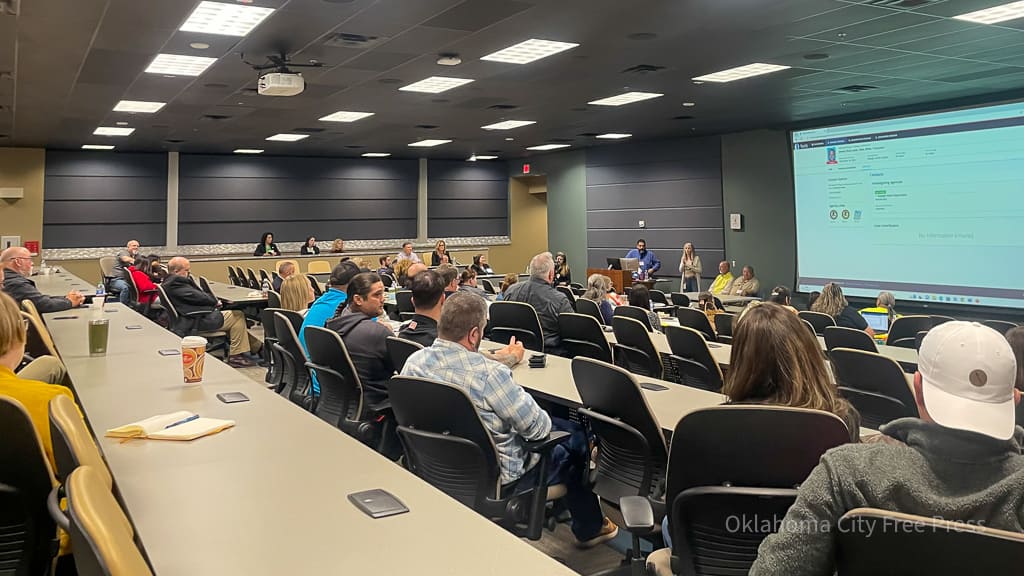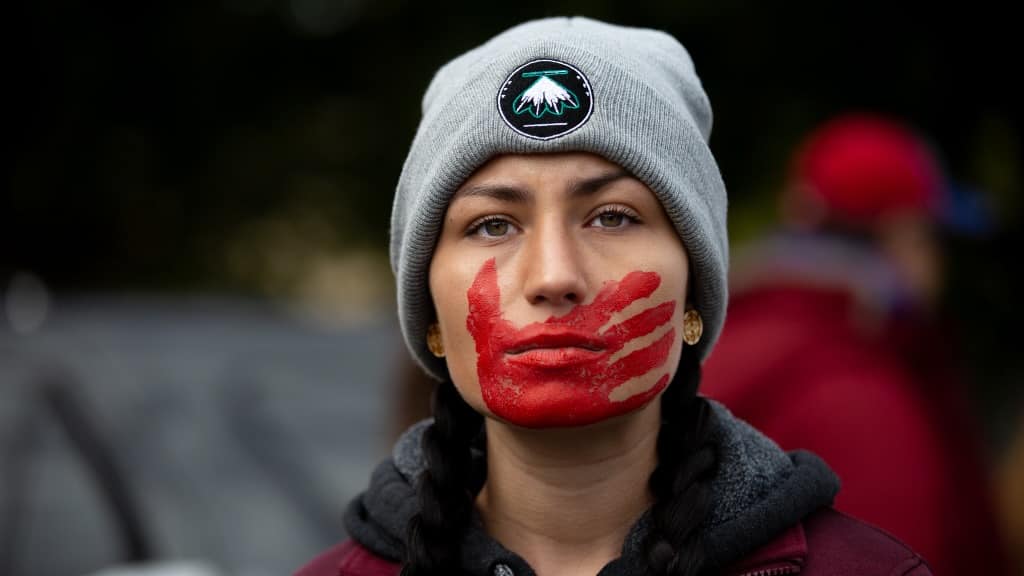Last Updated on April 25, 2023, 3:11 PM | Published: April 25, 2023
OKLAHOMA CITY (Free Press) —- As of now, there are 694 missing persons in Oklahoma submitted into the National Missing and Identified Persons System, also known as NamUs.
That figure makes up about 3% of the total current active and open cases nationally.
It is a nationwide problem that is finally being addressed at the federal level, and resources are being directed to states to join in the effort to find those who are missing.
And it has become a significant enough problem among American Indians/Alaska Natives that the U.S Bureau of Indian Affairs has a program dedicated to finding missing and murdered indigenous people.
Annual Missing Persons Day at UCO
Families and friends of missing persons came together Saturday with several federal, state, and local agencies to find answers and gain support in finding their loved ones for Oklahoma Missing Persons Day at UCO.
The U.S. Attorney’s office, UCO Forensic Science Department, Oklahoma State Bureau of Investigation, the Bureau of Indian Affairs, the Cheyenne and Arapaho Tribes of Oklahoma, the Oklahoma Office of the Chief Medical Examiner, and the Oklahoma Indian Bar Association were among the participating agencies at the event.

Local police departments, including Stillwater, Oklahoma City, and Edmond were also there to provide assistance to those who attended.
The annual event, live-streamed and posted on the ‘Missing in Oklahoma 2023’ Facebook group, offers families and friends of missing persons a chance to provide additional investigative leads and speak directly with law enforcement agents. Families that attended the event were also able to submit a DNA sample for free.
A way to find loved ones
The national NamUs database was created to connect law enforcement, medical examiners, and the families of missing persons to submit and compare case information to help identify missing individuals.
Carla Eastep, the mother of Tommy Eastep, shared her testimony on how the program helped her locate her son’s remains four years after he was first reported missing.
“It’s huge, this program is, what they do for us, and you don’t have to wait on law enforcement. I didn’t, because they moved too slow for me,” Eastep said during the conference. “I know they’re busy, but we want immediate results. We don’t want to wait years.”
According to the OSBI, Tommy Eastep was last seen on July 7, 2013, in Eufaula during a family get-together at Lake Eufaula. His abandoned truck was found two months after he vanished in the woods near Holdenville.
Four years later, hunters found his remains not far from where his truck was located. The case is still under investigation by the OSBI.
Now, Tommy’s mother participates in Oklahoma Missing Persons Day every year to share their family’s story and support other families who are desperately looking for answers for their missing loved ones.
“Do not give up on your hope,” Carla said in her speech. “ Don’t ever give up, that’s the driving force that will keep you looking.”
Bruce Benson’s Story
Maxine Benson, the wife of 69-year-old Grady “Bruce” Benson, spoke to Free Press about her husband, who was last seen on Nov. 9, 2022, at his home in Randlett, OK.
Maxine said the last time she saw her husband was before leaving on a trip to Branson, Missouri with her friends.
She started to get worried after she wasn’t receiving any texts or calls from her husband after reaching out to him several times.
Maxine called her son, who lives nearby, to look for Bruce, but only found his truck parked in the carport and his boots in the living room but no sign of his Dad.
A silver alert was issued, but there have been no updates on Bruce’s case since Nov.
Laws that address the problem
Savanna’s Law
Arvo Mikkanen, Assistant U.S. Attorney for the Western District of Oklahoma and Tribal Liason, spoke to attendees about Savanna’s law and how families can be active in helping criminal justice professionals find their loved ones.
In 2020, Savanna’s Law was passed as a bipartisan initiative focused on enhancing the federal response to missing and murdered indigenous people (MMIP) by improving coordination between law enforcement agencies at the federal, state, tribal, and local levels.
“With the tribal courts, with the state courts, and with the federal courts, what we’re advocating is working together to help solve these cases,” Mikkanen said. “ And make it easier for victims to get results and also make it easier to hold people that are responsible if it, in fact, involves a crime to get a quicker result.”
The law required the Department of Justice to:
- Develop regionally appropriate guidelines to respond to MMIP-related cases.
- Educate the public, including tribes and tribal organizations, on NamUs.
- Improve law enforcement protocols and establish a federal law enforcement strategy to respond to violence against Native Americans.
Dale Fine, Special Agent with OSBI, also spoke to attendees about two Oklahoma laws, Ida’s Law and Francines Law, that address MMIP-related and missing person cases.
Ida’s law
Ida’s Law is named after Cheyenne and Arapaho tribal member Ida Beard who went missing in 2015. The law was enacted to improve the protocol for law enforcement responses to MMIP-related cases in the state.
The law requires the OSBI to create an MMIP office of liaison, with the support of federal funding, to provide guidance to victims’ families in navigating the different agencies in the search for their missing loved ones.
Francine’s Law
Francine’s Law is named after Francine Frost who went missing in 1981 at a Tulsa grocery store. Her remains were found two years later, however, it took more than 30 years before they were identified as Frosts.
Part of the legislation requires law enforcement agencies statewide to submit the missing persons case to NamUs within 30 days of receiving the report. The law states that “No law enforcement agency shall require a delay in the taking of a report of a missing person when reliable information has been provided to the law enforcement agency that the person is missing.”
The law also prohibits law enforcement agencies from establishing a “waiting period” policy before accepting and investigating a missing child report.
Kasey Alert Act (pending legislation)
HB 1077, which would create a statewide alert system for critically missing adults between the ages of 18 and 59, is set to be heard on the Senate floor.
“This is very important. This applies to missing persons all across the state,” Fine said. “So, it’s an area that I definitely support and agree that we got to have some kind of alert.. As far as critically missing adults.”
Brianna Garcia is a freelance journalist covering local politics and culture for Free Press. She has a degree in Journalism from the University of Central Oklahoma.










